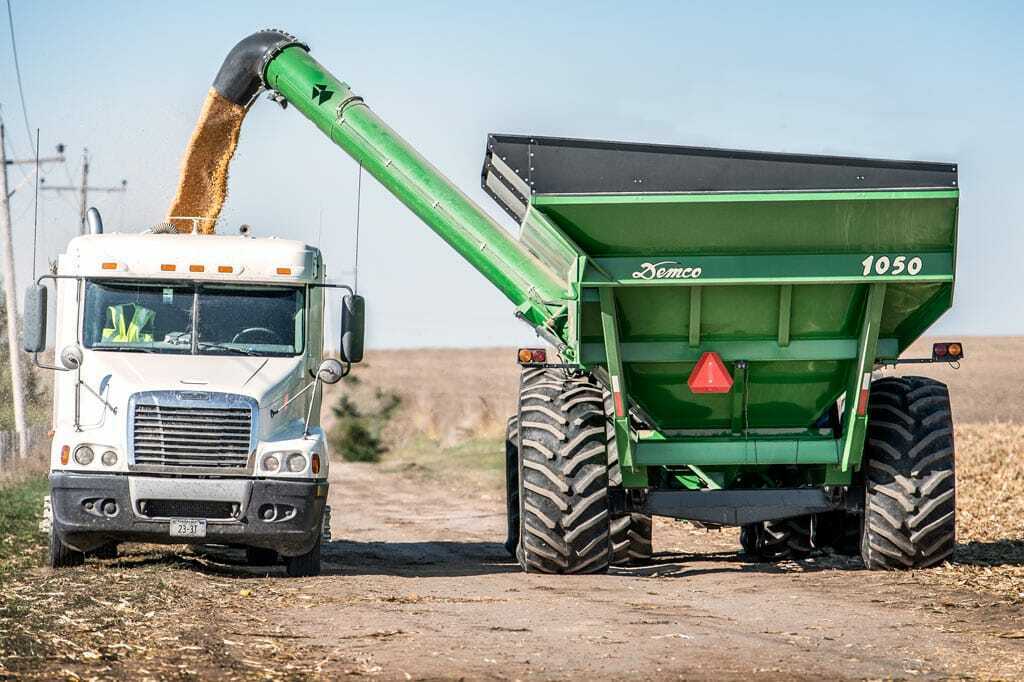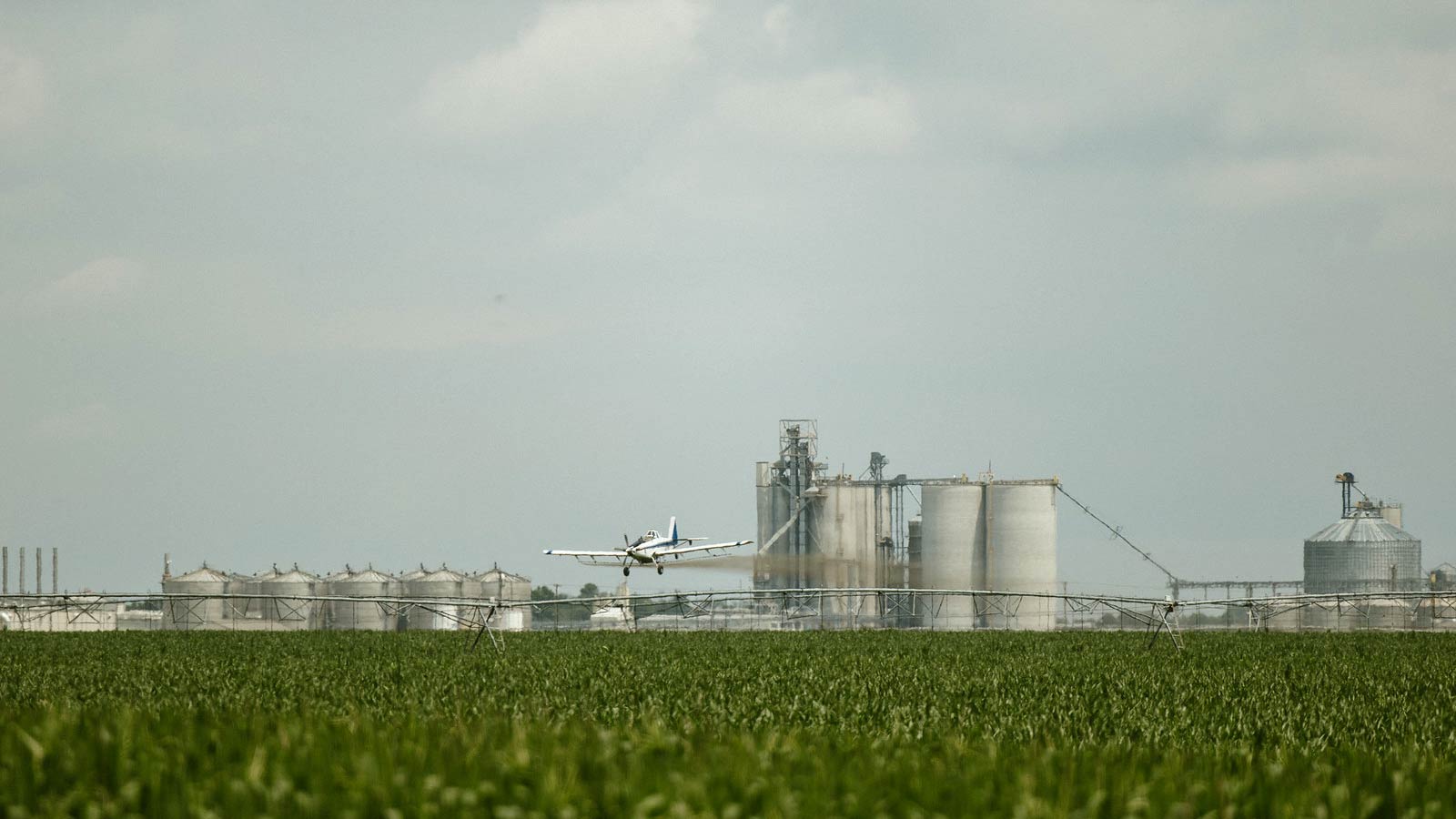Nebraska is the third largest corn-producing state in the United States. But what happens to all the corn our farmers grow?
While some of it is exported internationally, much of Nebraska’s corn actually stays within the country through domestic corn exports. The exact amount of corn we export varies from year to year, but typically it’s around 200 million bushels.
Whether domestically or internationally, the demand for Nebraska corn is necessary support our farmers and keeps local economies strong. As the national and global demand for Nebraska corn continues to grow, our farmers will continue working hard to meet that demand.
Here are some of the industries and states that benefit most from corn grown in Nebraska, as well as the food and fuel products it’s used in.
Domestic Exports
Ethanol
Nebraska is the second-largest producer of ethanol in the United States, behind only Iowa. The state’s 24 ethanol plants have a total production capacity of more than 2 billion gallons annually. Combined, these plants use more than 750 million bushels of corn per year and produce more than 6 million tons of distillers grains, a high protein livestock feed.
Nebraska ethanol is heavily exported to California, as well as other markets in the southwestern and western U.S.
Ethanol production offers many benefits to our state and country:
- It’s a renewable, clean-burning fuel source.
- It reduces our dependence on foreign oil.
- It creates jobs in rural communities.
Beef and Dairy Operations
While Nebraska livestock producers are major consumers of the state’s corn, Nebraska corn is also in high demand in beef and dairy operations in Texas, Colorado, California and the Pacific Northwest. California is our largest market, taking in more than 145 million bushels of corn each year for livestock and poultry.
These operations rely on corn-based animal feed because of its high nutrition. After harvest, field corn is transported to a feed mill, where it’s ground up and mixed with other ingredients.
There’s a couple of important reasons why beef and dairy farmers feed their animals corn-based feed:
- It’s an excellent source of energy and fiber.
- It’s relatively inexpensive, which helps operations keep their overall costs down.
- It’s easy to digest and extract nutrients from.
Distillers Grains and Corn Gluten Feed

Distillers grains and corn gluten feed are a byproduct of the ethanol production process. They’re high in protein and fiber and can be used as animal feed. In Nebraska, our ethanol plants produce 6.4 million tons annually!
Nebraska exports distillers grains to Texas and other Midwestern states to use in livestock operations, including cattle, swine and poultry farms. These grains are a nutritious, high-protein source of feed and they’re also relatively inexpensive.
International Exports
With more than 95% of the world’s population living outside the United States, international corn exports are crucial for our state, as it drives demand and price.
As a whole, U.S. corn producers supply one-third of the world’s corn and corn products. For Nebraska, international sales make up about 6% of our corn usage, with Mexico being one of our top markets.
Let’s review some of our top markets for international corn exports, as well as the products that are most in demand in these countries.
Top International Markets for Nebraska Corn Exports
While Mexico is the main market for Nebraska’s corn exports, other countries like Japan, South Korea, Taiwan and China are also important export markets. In fact, together these four countries make up about 25% of our state’s international corn exports, according to the Nebraska Department of Agriculture.
Diversity in international markets is important in case one country’s demand drops or another factor changes.
In addition to whole kernels, there are a number of different corn products that are in demand in these countries, such as:
- Dry milling products like starch and sweeteners
- Wet milling products like corn oil, corn gluten meal and corn gluten feed
- Ethanol
- Beef and pork, which is raised on corn-based animal feed
Mexico
As the largest importer of U.S. corn, Mexico plays an important role in setting the price of corn on the international market. More than 60% of Nebraska’s corn goes there each year.
While dried kernels make up the majority of Nebraska’s exports to Mexico, other products like corn oil, starch and sweeteners are also in demand. Like the U.S., corn is a major part of Mexico’s diet. It’s used in tortillas and tamales, as well as in feed for poultry and beef livestock.
Mexico is also one of the top markets for U.S. ethanol, as they are working to increase their use of renewable energy.
It’s also important to note that Mexico is among the top three markets for pork imports from the U.S.
Japan
Japan is the second-largest market for Nebraska’s corn exports, accounting for about 15% of our state’s international sales, according to the Nebraska Department of Agriculture.
While whole kernels make up the majority of Nebraska’s exports to Japan, other products like corn oil, starch, sweeteners and livestock feed are also in demand. Corn is used in a variety of food products in Japan, including sushi, tempura, soba noodles and soy sauce.
Japan is the third-largest market for U.S. ethanol exports, according to the Renewable Fuels Association. According to the latest available USDA data from 2019, the country used more than 127 million gallons of this fuel additive, which helps reduce emissions from vehicles.
Additionally, Japan is a major importer of U.S. beef and pork.
South Korea
South Korea is the third-largest market for Nebraska’s corn exports, accounting for about 10% of our state’s international sales, according to the Nebraska Department of Agriculture.
Like Japan, corn oil, starch and sweeteners remain in demand. Corn is used in a variety of food products in South Korea, including rice cakes, noodles, snacks and alcohol.
South Korea is the fourth-largest market for U.S. ethanol exports, according to the Renewable Fuels Association. And like Japan, South Korea is a top importer of U.S. beef and pork products.
Taiwan
Taiwan is the fourth-largest market for Nebraska’s corn exports, accounting for about 5% of our state’s international sales, according to the Nebraska Department of Agriculture.
Like Japan and South Korea, Taiwan also uses corn-based oil, starch and sweeteners. Corn is used in a variety of food products in Taiwan, including noodles, snacks, baby food and alcohol.
Taiwan is also a major market for U.S. ethanol exports, as they are working to increase their use of renewable energy.
In 2021, Taiwan eased its rules on U.S. beef and pork imports, which paves the way to increase imports in the country.
China
While China is not one of Nebraska’s biggest markets for corn exports, it’s a major player in the international corn market. In fact, China is the world’s largest producer and consumer of corn.
Although China produces corn, it doesn’t produce enough to meet the demands of its growing population. As a result, China has become a major importer of corn in recent years.
While most of Nebraska’s corn exports to China are whole kernels, the country is also a major market for U.S. ethanol exports. The country began importing ethanol in 2015 and has rapidly increased its imports since then. In 2021, Reuters reported the country bought 200 million gallons of U.S. ethanol, matching a previous record.
When it comes to beef and pork, China is the largest importer of U.S. meat products.
What’s Next for Nebraska’s Corn Exports?
The future looks bright for Nebraska’s domestic and international corn exports.
The demand for meat and corn-based products, especially in Asia, is expected to continue to grow in the coming years. And as more countries look to reduce their dependence on fossil fuels, the demand for ethanol is also expected to increase.




